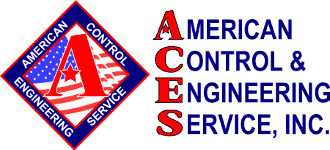THE MYSTERY
A barrel manufacturer called ACES with a problem: The heads that formed the beads of the barrels had started moving inconsistently and roughly enough that when they stopped the whole machine would jerk. Just two years earlier ACES had installed a brand new control system complete with new string encoders, and the machine had been running smoothly until the last few weeks.
There are two heads on the machine, each one weighing about a ton, and moving about 18″ in one second.
THE CLUES
The first system the CSI (Control Systems Inspector) excluded as a culprit was the programming — everything was in order there. Next he investigated the electrical system: Were the servos reacting correctly? Were the string encoders doing their thing? No problems there either.
That left mechanical failure. The CSI discovered that the south hydraulic cylinder had failed. The customer had an extra part so the CSI replaced the suspicious cylinder, which reduced the amount of jerking, but didn’t eliminate it.
Finally the CSI inspected the valve, even though it was only two years old. When he disassembled the valve he discovered rough, gouged edges internally.
What could be causing damage inside the valve?
THE PERP
The CSI had an idea — he scrutinized the oil and found metal shavings floating there. He deduced that the 20-year-old hydraulic pump was failing — literally “grinding itself to death” — and throwing off fine pieces of metal into the oil.
Eventually a big enough chunk scraped through the valve and damaged it, causing a groove that made it difficult to control the oil; it would push too hard, and then pop past the sticky point, causing the jerking.
Later, when the customer tore the old pump apart they found that one of the pistons had actually worn through the side of the pump, and the hydraulic reservoir was thick with metal shavings.
THE SOLUTION
The CSI recommended that the customer replace the pump and valve at the same time, but since there was a month’s wait on the pump, the customer asked ACES to replace the valve — knowing full well it could be damaged again.
After installing the new valve the CSI retuned the PID to compensate for the faulty pump. It took some doing: At first the head would over limit, then under limit before adjusting to the correct position. He finally got it to clamp in to ± 1/16″-1/8″.
AFTER PUMP INSTALLATION — A SECOND MYSTERY
The customer installed the new pump — and they were soon back on the phone to ACES, because now the heads were only moving 6″ before faulting.
THE CLUES
After confirming that the client had flushed out all the lines and hydraulic tank, the CSI inquired into the hydraulic pressure. “We don’t know,” replied the customer, because they didn’t have a pressure gauge that went high enough.
The CSI tested the machine and found everything running very slowly. “There’s something different about this pump,” he thought. He checked it and — lo and behold — the new pump came with an internal pressure regulator and flow control valve. This, in addition to the external ones the client was using, caused the slowdown.
THE SOLUTION
The customer pulled the pump and cranked the internal controls down all the way. When they started up again the machine ran, but was jerky once again. The CSI went through the PID tuning process again, adjusting speed to the new flow rate and pressure. Instead of being maxed out, he backed off on the pressure quite a bit.
With the new valve, hydraulic pump and a flawlessly tuned PID, the heads glide in smooth and soft every time, and the customer rolls out the barrels on schedule.
